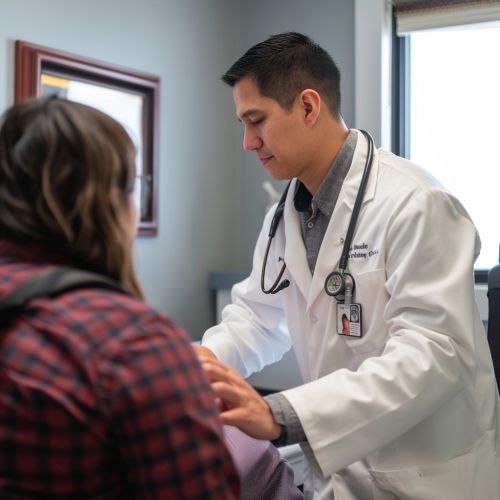Physical examination
Introduction
A physical examination is a routine procedure performed by healthcare providers to assess the general status of a patient's health. It involves the systematic inspection, palpation, percussion, and auscultation of various body systems. The examination provides valuable information about the patient's physical condition, and can help in diagnosing diseases or monitoring treatment progress.


History
The practice of physical examination dates back to ancient times. The earliest records of such practices can be traced back to the Egyptians and Greeks, who relied on observation and palpation to diagnose diseases. Over the centuries, the techniques and tools used in physical examination have evolved, with significant advancements made during the 19th and 20th centuries.
Purpose
The primary purpose of a physical examination is to gather objective data about the patient's health. This can aid in the diagnosis of diseases, monitoring of treatment progress, and prevention of potential health issues. It also provides an opportunity for the healthcare provider to establish rapport with the patient and educate them about their health.
Procedure
A physical examination typically begins with the healthcare provider taking a detailed medical history of the patient. This is followed by a systematic examination of various body systems, including the cardiovascular, respiratory, gastrointestinal, musculoskeletal, and neurological systems. The examination may also include specific procedures such as a breast examination or prostate examination, depending on the patient's age, sex, and risk factors.
Techniques
Physical examination involves four primary techniques: inspection, palpation, percussion, and auscultation.
Inspection
Inspection involves visually examining the patient's body for any abnormalities. This includes observing the patient's general appearance, skin color and condition, body symmetry, and movements.
Palpation
Palpation involves using the hands to feel the body for any abnormalities. This can include assessing the size, shape, and consistency of organs, detecting any masses or tenderness, and evaluating the skin temperature and moisture.
Percussion
Percussion involves tapping on the body to produce sounds that can provide information about the underlying structures. This can help in determining the size and position of organs, and detecting any fluid or air in the body cavities.
Auscultation
Auscultation involves listening to the sounds produced by the body, usually with the aid of a stethoscope. This can include listening to the heart and lung sounds, and the sounds produced by the gastrointestinal system.
Limitations
While a physical examination can provide valuable information about a patient's health, it has its limitations. It may not detect all health issues, especially those that do not produce visible or palpable abnormalities. Furthermore, the accuracy of the examination can be influenced by the skill and experience of the healthcare provider.
